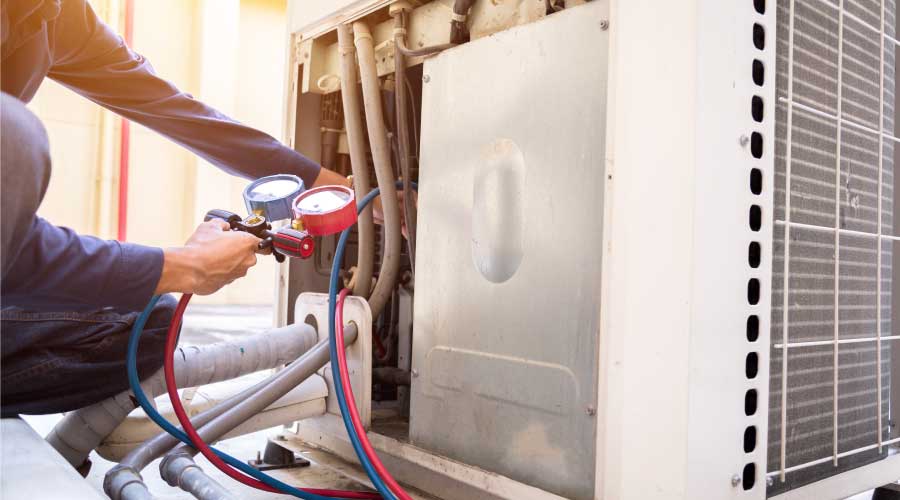Boilers: Implement Water-Treatment Program, Blowdown System
Minimizing water use among boilers starts with a comprehensive water-treatment program and blowdown system. Boiler water contains contaminants, and as they circulate through the boiler system, they adhere to heat-transfer surfaces, forming a layer of scale that reduces the heat-transfer rate and system efficiency. If this scale continues to accumulate, hot spots will form within the boiler and increase the chances for boiler failure.
Water-treatment programs introduce chemicals into the circulating boiler water that keeps contaminants in suspension, rather than allowing them to adhere to heat-transfer surfaces. Larger boiler systems use automatic chemical feeders that sense the level of contamination and dispense the proper amount of chemicals. Smaller boiler systems typically require manual monitoring weekly or monthly.
While a water-treatment program can keep contaminants in suspension, the concentration of contaminants will increase over time. To keep the concentration within acceptable limits, technicians can bleed off some of the water within the system and replace it with fresh water.
The rate at which they bleed off water depends on the concentration of contaminants. The goal of blowdown systems is to bleed off just enough water to keep the concentration of contaminants within the limits set by the boiler manufacturer. If technicians set the bleed rate too low, the contaminant concentration increases, reducing efficiency and operating life. If they set the bleed rate too high, the process will remove water from the system unnecessarily, increasing water and energy use.
To effectively minimize boiler water use, technicians must monitor water treatment and boiler blowdown systems regularly. A meter installed on the boiler's make-up water will identify the amount of water a system uses. Tracking this water use can help identify malfunctions within the system, but it also is important to monitor the quality of the water circulating within the boiler.
Technicians should take samples regularly to determine if the concentration of contaminants is within the acceptable range. If not, they will have to make changes, such as chemical feed rates and blowdown rates, to the program. Similarly, the quality of the make-up water supplied to a boiler can vary, requiring additional changes to the program.
Steam systems offer another area in which managers can minimize water use: the condensate return system. Ideally, all condensate within a steam system would return to the boiler. The more condensate that returns, the less make-up water the system requires, thereby reducing water use, water treatment, and energy costs. But steam condensate tends to be corrosive, and as a result, it is not uncommon to find entire sections of the condensate-return system have been abandoned.
Technicians should examine condensate-return systems at least once annually to ensure the system is returning as much condensate as possible to the boiler.
Related Topics:













